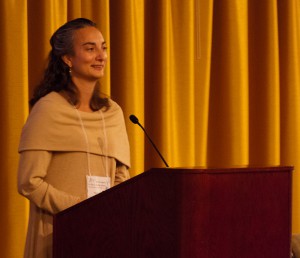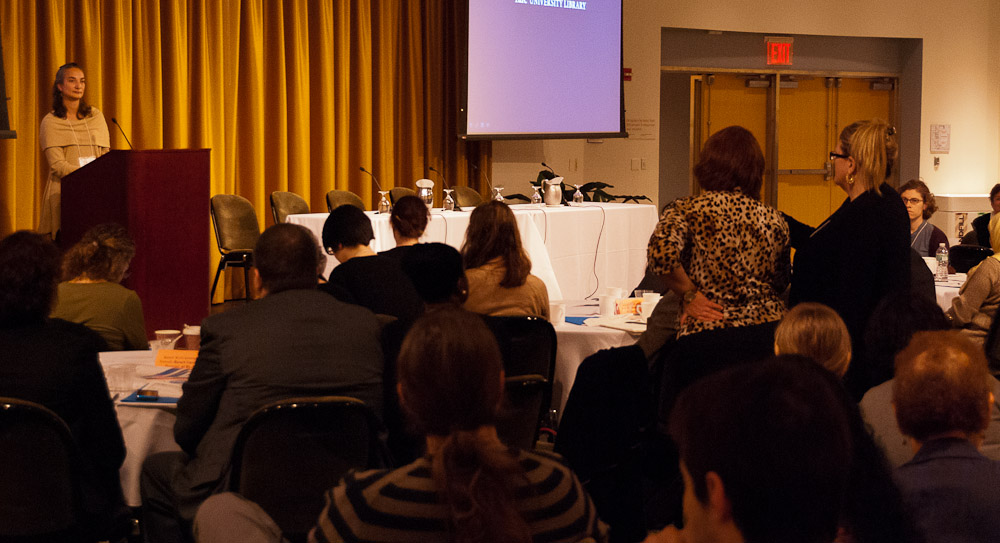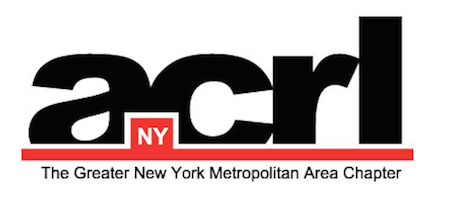
Susan Gibbons, University Librarian at Yale University, delivered a lecture that highlighted some of the current trends in higher education and how the library can influence campus-wide changes. The central thesis of the session was to consider how the library supports and contributes to the university mission.
Higher education institutions are in the midst of a financial crisis. State support continues to decline, government grants are drying up and healthcare reform means that insurance plans are more costly. Gibbons said that these challenges impact library budgets and in some cases, cause head administrators to question the ongoing validity of libraries in a digital information environment. Now more than ever, it is important for the library to have an institutional orientation and develop an identity that is linked to the mission of the university.
Across the academic community, services like Google have contributed to a false assumption that information is free and electronic resources result in cost savings. The reality is that digital libraries increase costs because they require a second set of expertise (e.g., copyright experts, technicians and preservationists). In addition, the library has higher operational costs than other buildings on campus because of longer hours and greater needs for security. As institutions tighten budgets, librarians must be ready to justify costs and answer one significant question: What is the university’s return on investment for libraries?

In this environment, Gibbons said that librarians should provide evidence for how collections are used as opposed to reporting on size alone. One strategy is to look for patterns and trends in collections, such as growing interest in particular subject areas indicated by an increased number of interlibrary loan requests. Based on this evidence, the library can present transparent budgets, justify how resources are allocated and make decisions to experiment with DDA models, among other things.
Essentially, developing a system of evidence-based decision making allows the library to contribute to institutional priorities instead of becoming an overhead cost. As an example, Gibbons said that declining student retention is one issue that impacted Yale in recent years. In response, the library developed a program that assigned each freshman to a personal librarian. This staff member welcomed students to Yale, took on a mentorship role and regularly inquired about research needs. The program was highly successful and established positive relationships between the student body and the library. It also received overwhelming support from Yale alumni.
In her concluding statements, Gibbons challenged library professionals to consider how programs and services align with the priorities of the institution. When the library creates initiatives that reflect the mission and values of the university, it will in turn receive the finance and support of the institution.
Melissa Goertzen
Columbia University Libraries
